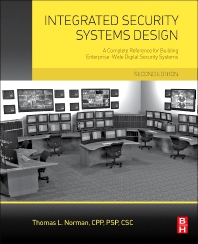While security systems integrators who incorporated unmanned systems into their solutions may have been considered early adopters last year, the market is growing fast, and if you don’t start doing your research now, you might end up late to the party. Here, those with experience in the sector share their advice for integrators.
“You have to open up to the possibility and take advantage of companies like Knightscope doing online demonstrations so you can see what a deployment looks like, and how that info comes through. What you see on TV and in the movies is not reality; the tech is impressive, but the robots are not going to be sentient beings; there are limitations.” — Stacy Stephens, Knightscope
“Safety has to be the number one goal. Fly every mission like you are sitting in the cockpit seat and your life depends on it. This is the only way manned and unmanned aircrafts can coexist.” — Robert Tabbara, 911 Security
“The first step to integrating autonomous drones into any company’s workflow is to get started in one or two facilities. We work with several integrators that began by integrating a few systems into a few sites before moving forward with increasing numbers of solutions and a wider range of facilities across several client sites.” — Dor Abuhasira, Percepto
“Be comfortable. It’s the same as any technology — be educated, know what’s out there, what’s good, what’s bad, bring it in to your staff and test it out. Make sure you know what it is that you’re offering.” — Aaron Heiner Simpson, Stone Security
“First, you need to have a managed services model. Second, you need to think about how robots or drones can augment or replace existing designs and installations. For example, instead of 100 fixed cameras, maybe you only need to install 25 cameras and deploy two robots, or outside, you can have fewer robots and a drone. This would both modernize your line card and give you a competitive advantage versus others bidding on the same job.” — Mark McCourt, Cobalt Robotics
“Make sure to have the appropriate technical people on staff. Technicians can provide needed maintenance, as well as integrations with other sensors or existing security infrastructure. Sales of security drones will also require proper knowledge of the system’s performance envelope, use cases and regulations pertaining to commercial drone operations. A formal strategy on how to integrate security drones into the customer’s daily operations will be key in leveraging the system’s capabilities.” — Jack Wu, Nightingale Security
“Do your homework. There are a growing number of options when it comes to drone security platforms, and only when you spend the time to educate yourself on these technologies will you understand how to best leverage them into your solutions approach to solving customer problems. Understand what the technology does, but also look for vendors that can complement and support your engineering and technical teams. A system that cannot be fully integrated into the customer’s technology plan will only amount to a single closed video camera that can fly.” — Ryan Rieger, NextGen Security








